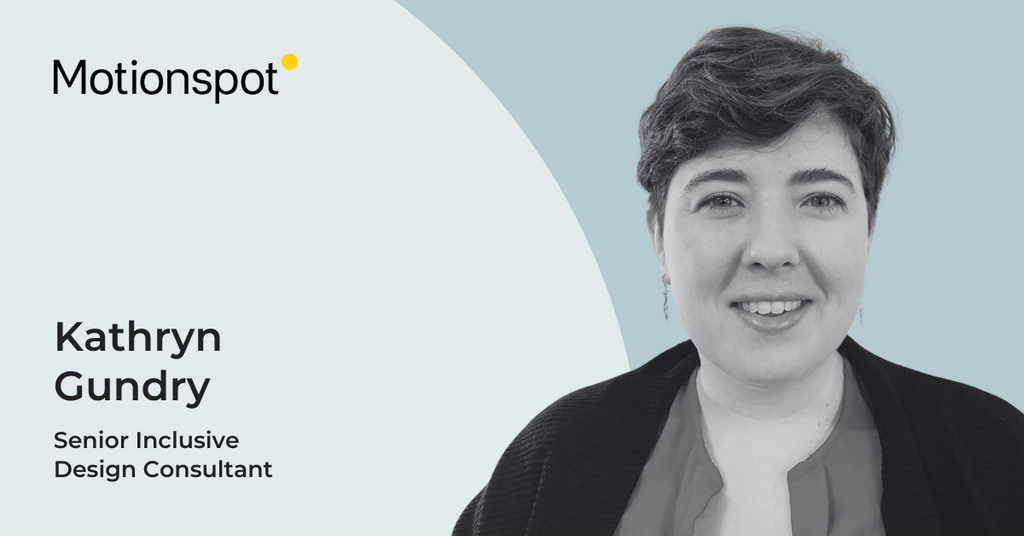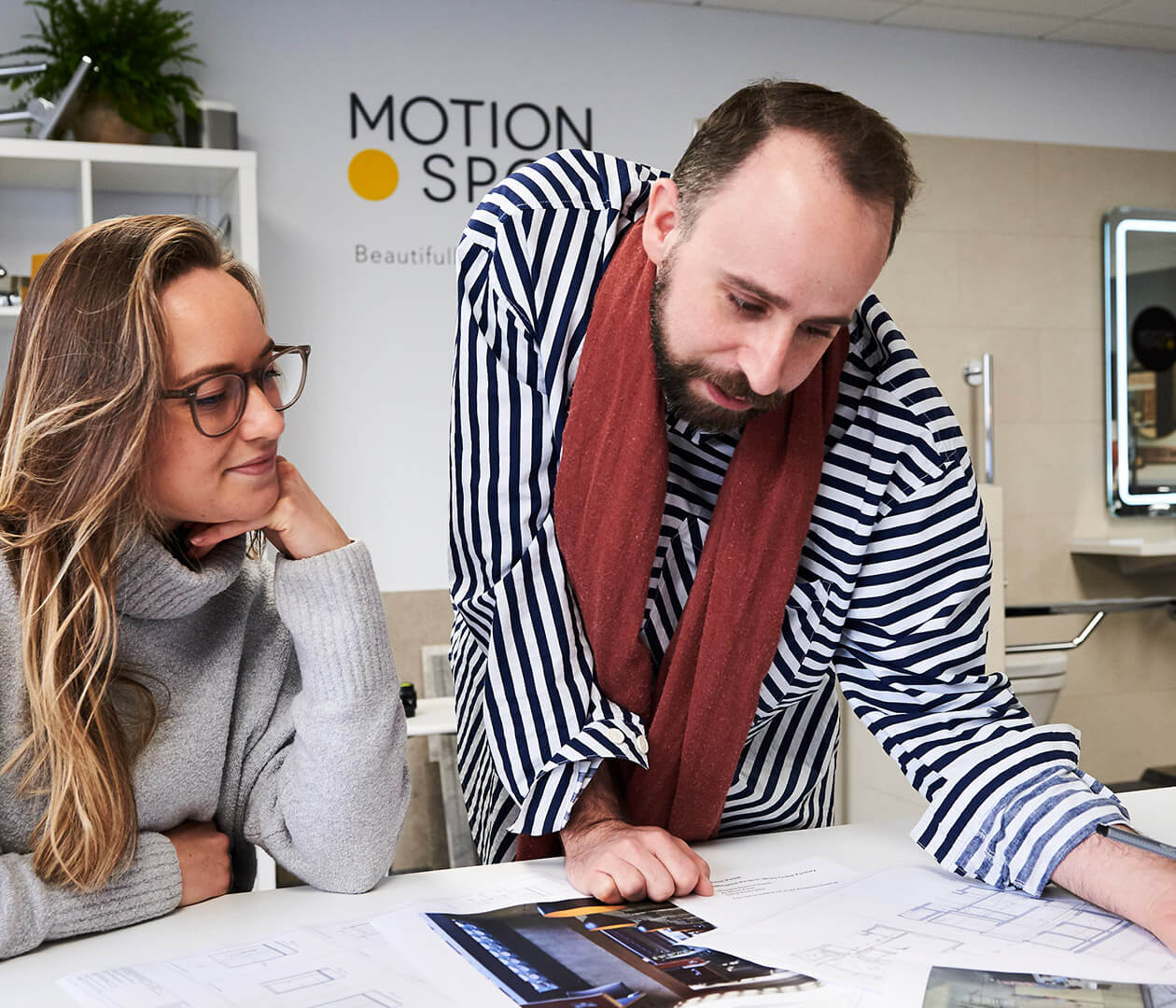Kathryn Gundry - Senior Inclusive Designer
 Kathryn is a Senior Inclusive Design Consultant at Motionspot. An Architect by background, with a focus on accessible and inclusive design, her expertise spans public buildings, education, listed buildings, community spaces, specialist housing for older and disabled people, and age-friendly environments.
Kathryn is a Senior Inclusive Design Consultant at Motionspot. An Architect by background, with a focus on accessible and inclusive design, her expertise spans public buildings, education, listed buildings, community spaces, specialist housing for older and disabled people, and age-friendly environments.
Kathryn is passionate about making the built environment inclusive to as broad a range of users as possible. She is actively involved in the industry as Vice Chair of Access Association London and the South-East region, an Access Consultant on the National Register of Access Consultants (NRAC), and Access Advisor to the Diocesan Advisory Committee for the Care of Churches.
Kathryn has authored research including: Trauma Informed Design within Learning Disabilities Environments and Design Guidelines for Inclusive, Enabling Environments for Adults with Complex Needs.
Why did you choose a career in access and inclusion?
Just as I started out on my architectural journey when I was about 16 or 17, my mum was diagnosed with multiple sclerosis (MS). I often went out with my mum to places that said they were ‘accessible’ but actually weren’t. I think this is where my passion for educating people and businesses about what accessibility and inclusion really means comes from. From then on, all the projects I was involved with have woven access and inclusion through them in some way.
At university I had a focus on inclusive design; from a home for a visually impaired artist to a farm that employed neurodivergent people. For my dissertation I focused on intergenerational design - a dementia care home with a nursery day care. There was little evidence on the topic at the time, but I had a great tutor who supported me to pursue it. As part of this project, we got into the beauty of inclusion, just like Motionspot. Particularly around haptics (relating to the sense of touch) and materiality (such as pattern and temperature). This is when I really fell in love with inclusive design.
Studying abroad in Holland, at one of the biggest architectural schools in the world, allowed me to experience a different context and culture. I have brought this love of the diversity in people into my design work. I feel invigorated talking to people with different experiences and this has led me to get involved in boards and awards outside of work that emphasise what I care about. This includes passionate groups such as Women in Social Housing (WISH) and The Access Association, which has propelled me even further down the path of inclusive built environments.
Architecture historically was a predominantly male industry and can lead to a homogenous working environment. So, as well as an access and inclusion specialism, I have always looked for practices that have a good balance. This can be quite hard to find, but places that live their values do exist - just like Motionspot.
What is your favourite project to date?
Social housing is an area I am particularly passionate about and lots of the projects I have worked on are in this area. In Holland, where I studied, the model for housing is very different to the UK. There is less negativity associated with social housing and a much greater proportion of the population lives in this tenure.
One project that really stands out is Kingston Churches Housing Association. I 100% back what this organisation are trying to do. This project really helped address a housing crisis in the local area and WWA unequivocally showcased the value and received permission.
What are you most excited about for the future of accessible and inclusive design?
The industry is so much further along than it was 10 years ago. It’s travelling in the right direction, it could just be quicker. When I was a student there were lectures on just a few access topics. Now, they increasingly reflect the inclusive world we want to be.
The Inclusive Design Overlay to the RIBA Plan of Work has played a massive part in this. So too has Covid; the national briefings without sign language brought these access and inclusion discussions up on scale never before seen. As Vice Chair of the Access Association London and South-East region, I now see access and inclusion in the news in some form or another every week. My husband is also a teacher, and he sees that young people are now much more conscious.
It’s easy to focus on the negatives, but we are on the right track. We need everyone to be involved. If we only talk to the changemakers, we are never going to get there. Which is why I work a lot with schools and universities. I have gone into schools for career days, supported work experience students, and been a mentor for students at London University. I am currently exploring an exciting new connection to tutor at a UK university on Inclusive Design with first year architecture students. I am always keen to help people follow their passions, and want to share mine with young professionals to see the world through a new lens.
Before working at Motionspot, I mostly worked in very local contexts. Now, I am excited to be able to take this work to improve access and inclusion at a global scale.
Get in touch.
Our team is always happy to discuss your requirements and provide a scope and fee proposal for your project. Get in touch to chat through your plans with us.

Start a conversation
Get in touch to chat through your plans or requirements and see how we can help. Please complete your contact details below.
Contact usStay connected
Sign up to receive the latest inclusive design insight and inspiration from our team.



